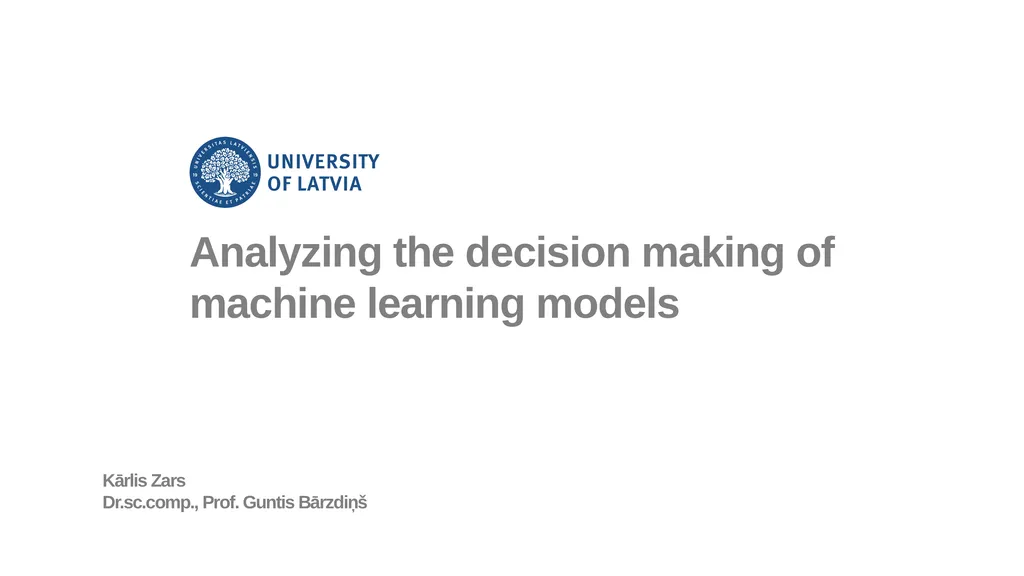
Analyzing the decision making of machine learning
Author: tatiana-dople | Published: 2025-06-27
Description: Analyzing the decision making of machine learning models Kārlis Zars Dr.sc.comp., Prof. Guntis Bārzdiņš Research focuses on analyzing the decision-making processes of machine learning models. As these models become increasingly complex,
Download Presentation
Download the PPT/PDF: Download
Transcript:
Loading transcript�